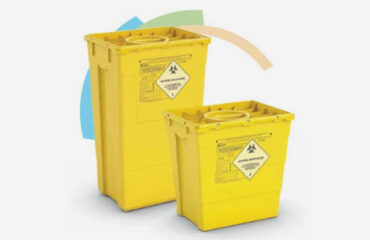The smart Trick of Reclaim Waste That Nobody is Discussing
The smart Trick of Reclaim Waste That Nobody is Discussing
Blog Article
Not known Factual Statements About Reclaim Waste
Table of ContentsIndicators on Reclaim Waste You Should KnowThe 10-Second Trick For Reclaim WasteExcitement About Reclaim WasteGet This Report on Reclaim WasteThe Basic Principles Of Reclaim Waste
Check out the types, events, and kinds of fluid waste. Domestic sewer waste refers to the waste and items from a household septic system. This kind of waste is developed by people in houses, colleges, and other structures. This only includes septic tanks that have a drain area. The appropriate management and disposal of residential sewage waste call for liquid waste to be moved to a sewage therapy plant where the proper techniques and equipment are related to detoxify and dispose of waste.
Commercial waste commonly consists of potential dangers, such as combustible materials or a combination of liquid and solid waste items, and requires an advanced and in-depth disposal procedure. The disposal of industrial waste commonly includes the purification of waste before transport to make certain risk-free and proper disposal. Industrial waste is created from by-products and overflow of commercial procedures and manufacturing.
This kind of waste can not make use of the exact same sewer management transportation or processes as septic or industrial liquids. The industrial waste management process needs the assessment and screening of fluid waste prior to it undertakes the disposal procedure (industrial wastewater treatment). Runoff waste is the liquid waste that comes from runoff and excess stormwater in highly populated areas or cities
Overflow waste can trigger contamination and flooding if not dealt with effectively. Making certain correct waste administration can prevent disasters and reduce ecological damage.
Rumored Buzz on Reclaim Waste
Call PROS Solutions today to learn regarding our waste administration and disposal solutions and the appropriate means to take care of the fluid waste you create.
(https://forums.hostsearch.com/member.php?271151-reclaimwaste1)Do you understand what takes place to your water when you disengage, flush the commode or drain the washing machine? No? Well, it's worth recognizing. This supposed 'wastewater' is not only a vital source however, after treatment, will certainly be released to our land, rivers or the ocean. Used water from bathrooms, showers, bathrooms, kitchen area sinks, laundries and commercial processes is recognized as wastewater.

water made use of to cool equipment or tidy plant and devices). Stormwater, a kind of wastewater, is overflow that moves from agricultural and city areas such as roofs, parks, yards, roads, courses and seamless gutters right into stormwater drains, after Learn More Here rain. Stormwater moves without treatment directly to local creeks or rivers, at some point reaching the sea.
The Definitive Guide for Reclaim Waste
In Queensland, most wastewater is treated at sewage treatment plants. Wastewater is delivered from domestic or commercial sites through a system of sewers and pump stations, called sewerage reticulation, to a sewage treatment plant. City governments develop, preserve and operate most sewage treatment plants. Operators are certified under the Environmental Security Act 1994 to discharge cured wastewater at an appropriate environmental standard into waterways.
The Department of Natural Resources encourages neighborhood federal governments concerning handling, operating and maintaining sewerage systems and treatment plants. In unsewered locations, city governments might require homeowners to mount specific or family sewage therapy systems to treat residential wastewater from bathrooms, kitchen areas, shower rooms and laundries. The Department of Natural Resources authorizes making use of family systems when they are verified to be effective.
Most stormwater obtains no therapy. In some new neighborhoods, treatment of some stormwater to get rid of litter, sand and crushed rock has begun making use of gross contaminant catches. Wastewater therapy occurs in 4 stages: Gets rid of strong matter. Bigger solids, such as plastics and other objects mistakenly discharged to sewers, are gotten rid of when wastewater is passed via displays.
Utilizes little living organisms understands as micro-organisms to break down and remove continuing to be liquified wastes and fine fragments. Micro-organisms and wastes are incorporated in the sludge.
Getting The Reclaim Waste To Work
Nutrient elimination is not readily available at all sewer therapy plants because it calls for expensive specialized equipment. Clear liquid effluent produced after treatment may still consist of disease-causing micro-organisms - liquid waste removal.

This normally means wastewater needs to be dealt with or contaminants eliminated prior to it can be released to waterways. Most wastewater moves into the sewage system. Under the Act, city governments carry out approvals and licences for ecologically relevant tasks (ERAs) including wastewater releases that could have a local effect. The division administers authorizations and licences to ERAs involving wastewater launches that may have a local or statewide effect.
The Reclaim Waste Diaries
Tracking supplies valid details about water quality and can verify that permit problems are being fulfilled. The information acquired through monitoring offers the basis for making water high quality decisions.
Report this page